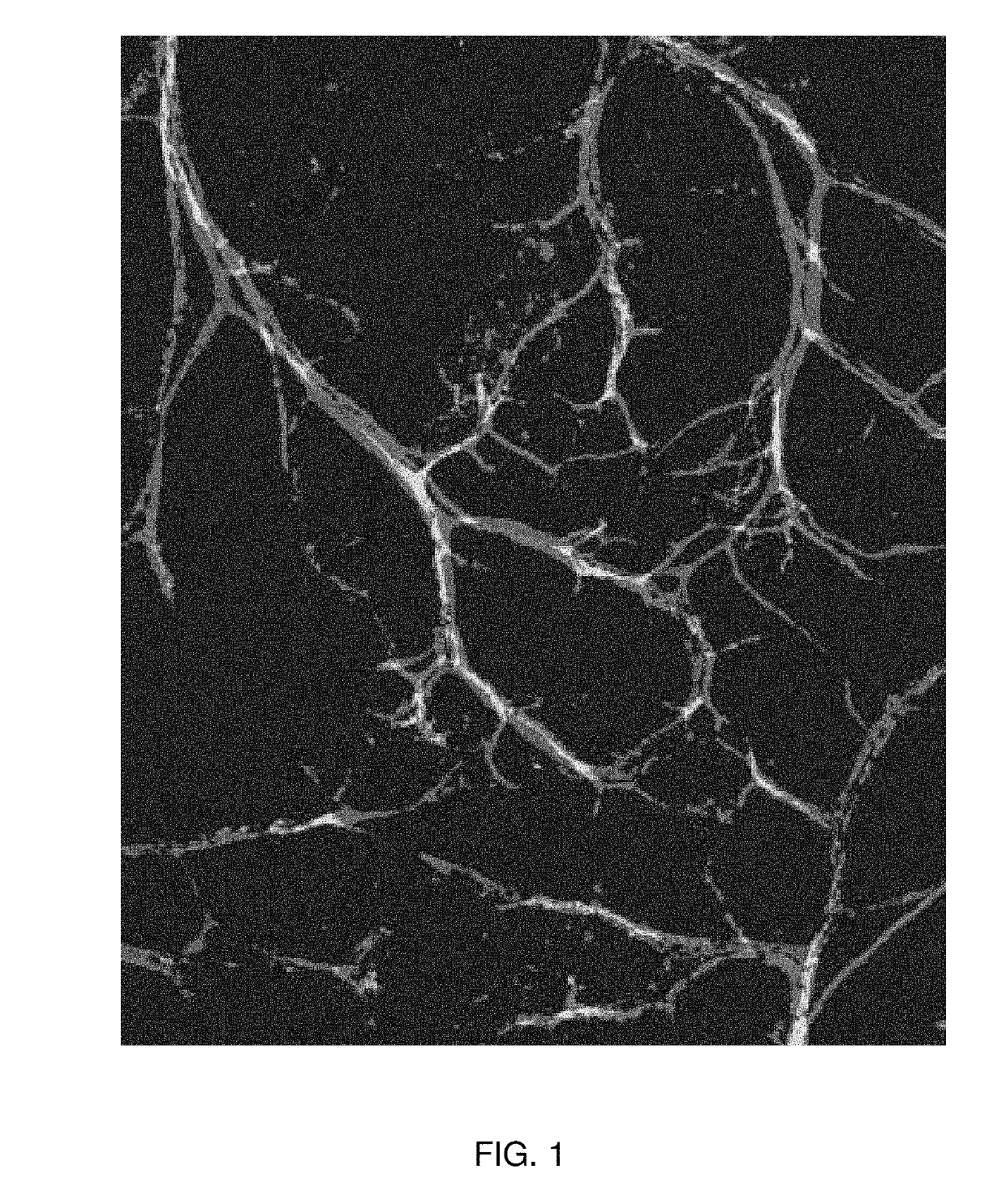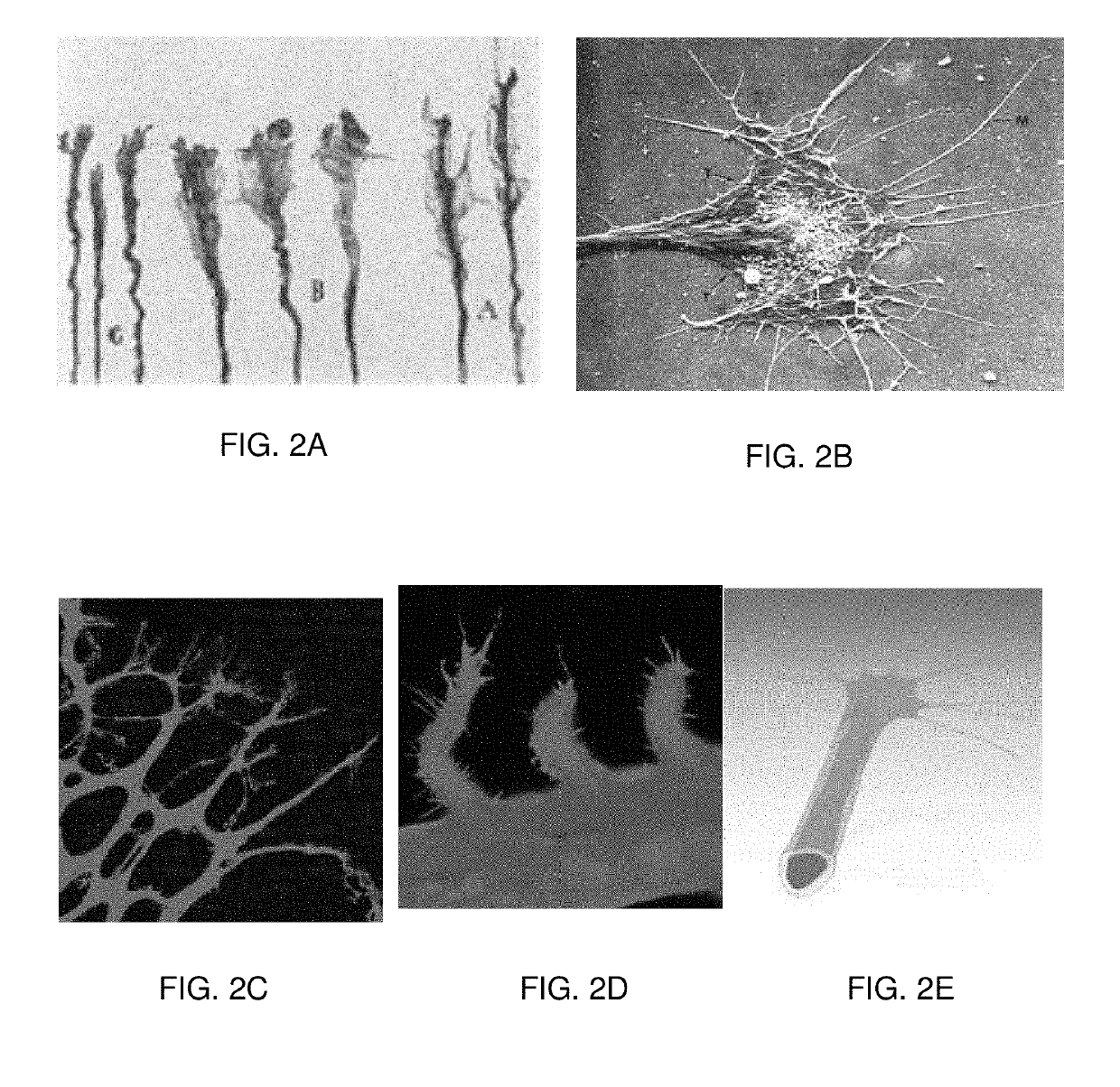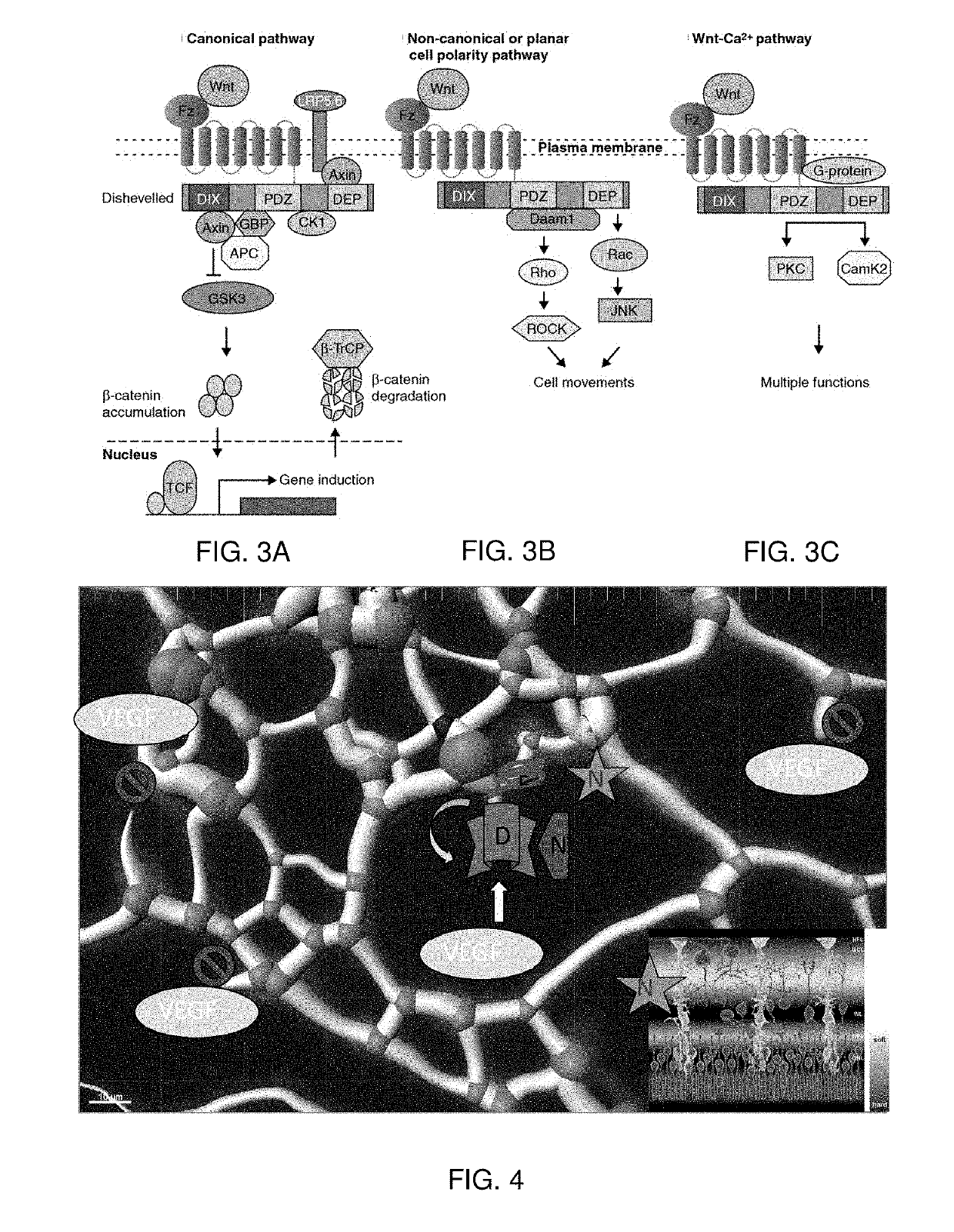Retinal capillary regeneration with synthetic protein
a technology of synthetic proteins and retinal capillaries, applied in the direction of peptide/protein ingredients, peptide sources, angiogenin, etc., can solve the problems of short half-life of naturally occurring wild versions of norrin, and ineffective use of capillary stabilization and vascular regeneration in retinal tissu
- Summary
- Abstract
- Description
- Claims
- Application Information
AI Technical Summary
Benefits of technology
Problems solved by technology
Method used
Image
Examples
example 1
[0097]C57BL / 6J mice were evaluated using a model of oxygen-induced retinopathy (OIR). Test animals were divided in three groups and treated at postnatal day (P) 14 with intravitreal injections of Wnt-signaling modulators (respectively, norrin, Dickkopf-related protein 1 [DKK1], and norrin+DKK1) in one eye. A fourth group of animals were treated with injection of PBS in one eye as well and used as a control group. Areas of avascular retina and neovascular tufts in injected (treated) eyes and noninjected fellow eyes were determined in each of the four groups at P17 (3 days after intravitreal injection) and the difference related to these characteristics was obtained among them. To evaluate the effect of norrin on progression of retinopathy, a fifth litter (eight animals) was also treated with norrin and these retinas were evaluated at different time points.
[0098]The oxygen-induced retinopathy (OIR) murine model using C57BL / 6J mice neonates used in this example, was previously describe...
example 2
[0117]Bosma et al.34 have shown that the breakdown of the blood-brain barrier (BBB) or inner blood-retinal barrier (BRB), induced by pathologically elevated levels of vascular endothelial growth factor (VEGF) or other mediators, can lead to vasogenic edema and significant clinical problems such as neuronal morbidity and mortality, or vision loss. Restoration of the barrier function with corticosteroids in the brain, or by blocking VEGF in the eye are currently the predominant treatment options for brain edema and diabetic macular edema, respectively. However, corticosteroids have side effects, and VEGF has important neuroprotective, vascular protective and wound healing functions, implying that long-term anti-VEGF therapy may also induce adverse effects. Bosma et al.34 show that targeting downstream effector proteins of VEGF and other mediators that are directly involved in the regulation of BBB and BRB integrity provide more attractive and safer treatment options for vasogenic cere...
example 3
[0122]Conducted experiments show that norrin works in non-tight-junction protein pathways as well to reduce macular edema and inflammation. FIGS. 13 and 14 illustrate the results of PLVAP mRNA expression after treatment for twenty four hours with norrin. In FIG. 13 norrin decreases expression of PLVAP. In FIG. 14 VEGFA165b increases PLVAP expression, while norrin diminishes the increase of PLVAP caused by the VEGFA165b.
[0123]Based on the experimental findings presented herein, norrin may represent a unique molecule that is able to function as both a Wnt-ligand and a growth factor and regulate angiogenesis in a fashion that mimics that seen in the developing eye. This has significant implication in the treatment of many eye diseases characterized by anomalous vasculature, including avascular retina, vascular permeability, capillary drop-out, and NV. These conditions are seen in the inherited vitreoretinopathies, such as FEVR, Norrie disease, and persistent fetal vasculature, as well ...
PUM
| Property | Measurement | Unit |
|---|---|---|
| Capillary wave | aaaaa | aaaaa |
| Therapeutic | aaaaa | aaaaa |
Abstract
Description
Claims
Application Information
 Login to View More
Login to View More - R&D
- Intellectual Property
- Life Sciences
- Materials
- Tech Scout
- Unparalleled Data Quality
- Higher Quality Content
- 60% Fewer Hallucinations
Browse by: Latest US Patents, China's latest patents, Technical Efficacy Thesaurus, Application Domain, Technology Topic, Popular Technical Reports.
© 2025 PatSnap. All rights reserved.Legal|Privacy policy|Modern Slavery Act Transparency Statement|Sitemap|About US| Contact US: help@patsnap.com



